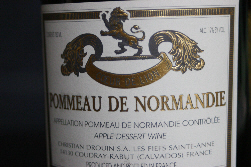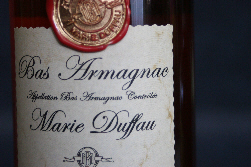It’s been a while since I’ve fully visited the range of drinks that were variously known as corpse revivers, fog cutters, gloom chasers and what have you — regardless of the moniker, the drinks that were designed to be consumed at a relatively early hour to dispel the effects of a long night before.
Thanks to Ted Haigh — who propelled the Corpse Reviver #2 out of obscurity and into ubiquity (at least at craft-cocktail establishments) when he included it in Vintage Spirits and Forgotten Cocktails, now poised to retake the bibulous world in an expanded edition — the corpse reviver category has (sorry) returned from the dead. Somewhat, that is.
For there to be a #2, there has to be a #1 — but as with many freshman efforts, the initial entry into the category (at least, the one that was dubbed #1 in 1930s bar manuals by Harry Craddock and Patrick Duffy) has been overshadowed by its more illustrious successor. In the case of the Corpse Reviver, this is as it should be — while version #1 is certainly nothing to sneeze at, it lacks the delicacy of the #2; plus, if the directions are followed to the letter, it’s an ass-kicker. Let’s take a quick look —
Corpse Reviver #1
- 1 1/2 ounces brandy
- 3/4 ounce apple brandy
- 3/4 ounce sweet vermouth
Stir well with ice, strain into chilled cocktail glass. Hit it with a lemon peel, if you like.
Short, sharp and strong — not bad, but nothing that remarkable. No wonder it faded.
 But, a year or so back, I was served a variation on this drink by Jamie Boudreau. Jamie freshened up the CR1 by using pommeau de normandie in place of the apple brandy; this reduced the alcohol level of the cocktail, making it a bit more managable, while also bumping up the fruitiness factor without adding extra sweetness. Rounded off with peach bitters and Angostura, and the Corpse Reviver #1 had a — sorry again — new lease on life. Here’s Jamie’s version, the Naramata:
But, a year or so back, I was served a variation on this drink by Jamie Boudreau. Jamie freshened up the CR1 by using pommeau de normandie in place of the apple brandy; this reduced the alcohol level of the cocktail, making it a bit more managable, while also bumping up the fruitiness factor without adding extra sweetness. Rounded off with peach bitters and Angostura, and the Corpse Reviver #1 had a — sorry again — new lease on life. Here’s Jamie’s version, the Naramata:
Naramata
- 1 1/2 ounces cognac
- 1 oz sweet vermouth (Cinzano recommended)
- 3/4 ounce pommeau de normandie
- 2 dashes peach bitters
- 2 dashes Angostura bitters
Stir well with ice, strain into chilled cocktail glass. Flame an orange twist over the drink and use as garnish.
 I tried a few versions of this drink; while the impulse is always there to reach for a premium vermouth like Carpano Antica, it most assuredly does not work in this cocktail. The Antica has such a strong flavor that it overwhelms the pommeau; instead I used Martini & Rossi as it’s my workhorse sweet vermouth, and it seemed to work well in this drink. Also, I eschewed the cognac recommendation and instead went with Armagnac, reasoning that the more rugged, earthy flavor could lend an interesting angle to the drink. I doubt I could tell a Naramata made with cognac from one made with armagnac in a blind tasting, but the Armagnac did its job well and I have no complaints.
I tried a few versions of this drink; while the impulse is always there to reach for a premium vermouth like Carpano Antica, it most assuredly does not work in this cocktail. The Antica has such a strong flavor that it overwhelms the pommeau; instead I used Martini & Rossi as it’s my workhorse sweet vermouth, and it seemed to work well in this drink. Also, I eschewed the cognac recommendation and instead went with Armagnac, reasoning that the more rugged, earthy flavor could lend an interesting angle to the drink. I doubt I could tell a Naramata made with cognac from one made with armagnac in a blind tasting, but the Armagnac did its job well and I have no complaints.
Anyway, this is another drink I’ve been thinking about for a long while, dusted off for the new millenia.
This drink is part of 30/30, a series of 30 drinks in 30 days — or as much as I can keep up before collapsing in a weary, booze-addled heap.

Making the Naramata this evening, I substituted Apfelkorn for the pommeau de normandie. It turned out to be quite tasty. Of course, I have no idea what it would taste like with the pommeau de normandie, but the drink wasn’t overly sweet, which was what I was worried about.
Anyway, really enjoying the series (the Savoy Tango was also a big hit).
The other recipe commonly listed as the CR1 contains equal parts brandy, Fernet Branca and creme de menthe. That was my first experience with the Corpse Reviver family and, I believe, the first classic cocktail I ever tried. Fortunately, it didn’t scare me away–in fact it was an eye-opening peek beyond the dull mixed drinks I usually made myself. From there I picked up a bottle of Maraschino to make Aviations and began my descent into obsession.
I’m sipping a Naramata, using Apfelkorn as well, and I like it. In a fit of absent-mindedness I used Martin Miller’s the first time, which I don’t recommend.